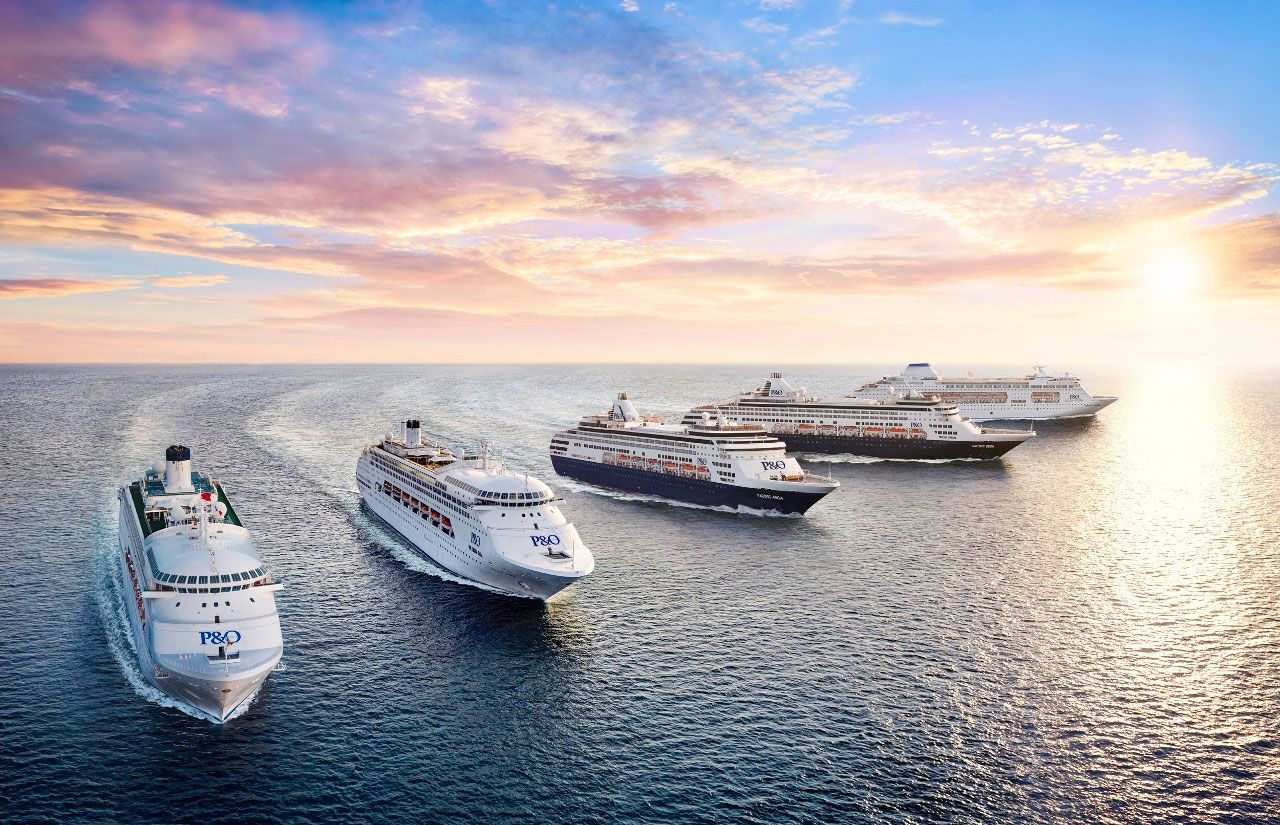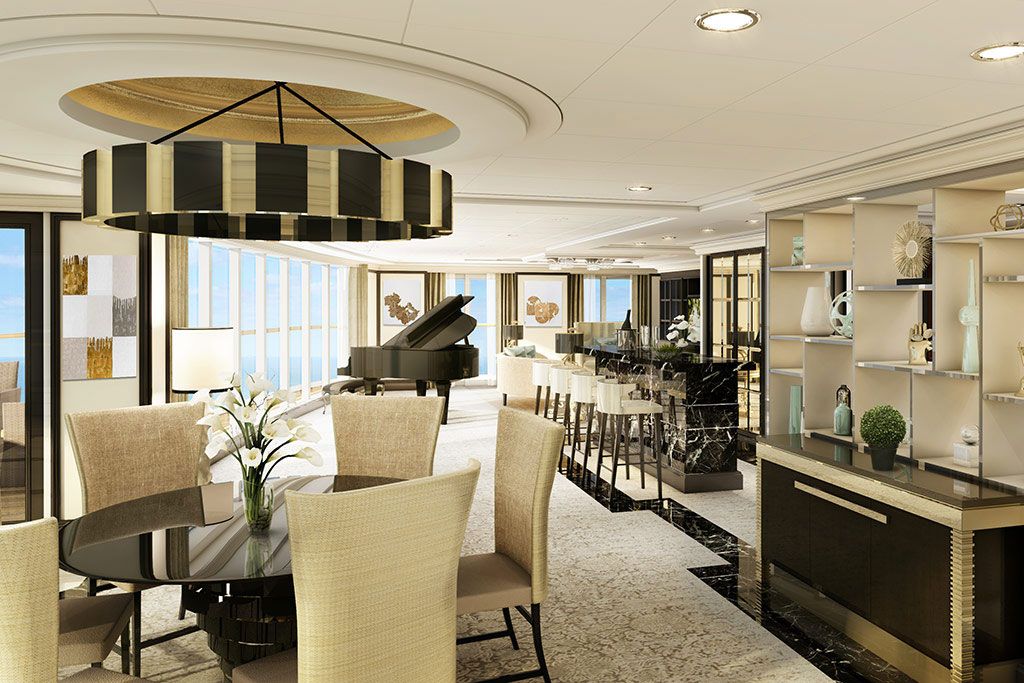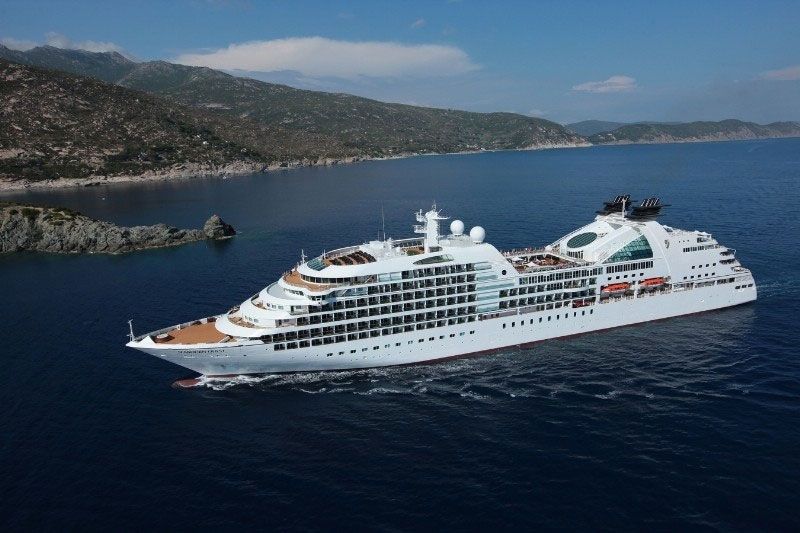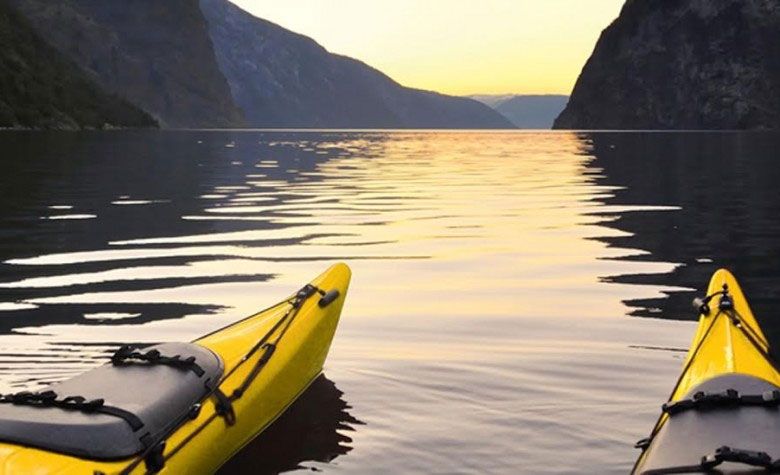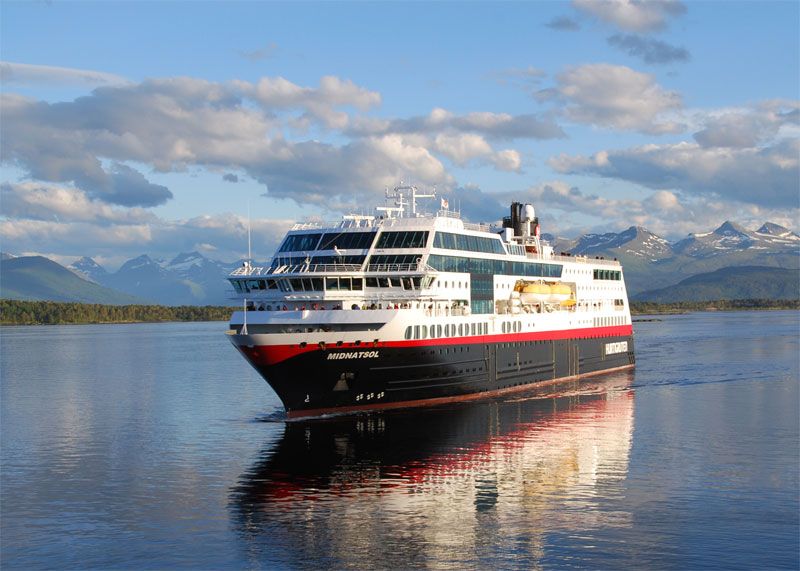
"Hark, now hear the sailors cry/Smell the sea and feel the sky/Let your soul and spirit fly into the mystic,” Van Morrison wrote these lyrics back in the 1970s, and those same words, “into the mystic,” followed me like a determined seagull on the Hurtigruten Midnatsol voyage I took this past February.
The mystic—as I interpreted Morrison’s great lyric—is always a personal unknown, usually combined with great adventure and exploration. My Hurtigruten journey began in Kirkenes, Norway, three miles from the Russian border where we sailed down the coast, stopping in fascinating small towns and villages, until arriving in Bergen. We took the half trip, as the full is 12 days beginning and finishing in Bergen. But the half in February with the possibility of seeing the dancing Northern Lights sky, was fine with me.

The town of Kirkenes seemed almost permanently impacted with ice, snow and deep grey blue Fjords. While there, you learn about its World War II history, and once known, is not easily forgotten. Kirkenes, Dresden, and Malta were the most heavily bombed cities during World War II. Kirkenes had more than 300 bombing raids from Soviet airplanes, as it was so close to the Murmansk front, the area that had to be held by Russia so that Germany could not invade. During the bombing raids, locals and others sought refuge in Andersgrotta, an air-raid shelter in the center of town which still exists today as a tourist attraction. As with much World War II European history, it is hard to believe this destruction could have occurred in such a peaceful, quiet town. But it had.
Now Kirkenes is involved in more of a 21st century travel mode, with adventure options for visitors who go to see what extreme Northern Norway has to offer, before boarding Hurtigruten to return south. While there, travelers can experience a sleigh ride through the blue grey Fjords on a King Crab safari where they can hold King crabs after they’re caught, before feasting on their fresh meat an hour later.

There’s also an option to spend the night in the Kirkenes Snowhotel, an igloo-like structure, sleeping on an ice bed, in a sleeping bag and under a reindeer skin, and eating reindeer sausage over an open fire in the kitchen/restaurant. It is a once-in-a-lifetime experience, made easier by knowing the next day you would board the Hurtigruten Midnatsol ship, leave the fjords, the dog sleds, the open sleighs, and reindeer behind.
The next day, we sailed into the mystic, on the dark azure sea, experiencing the intense light of short days, the long blue hours of the gloaming, with a night full of stars and clouds. When I was on deck in the evening, facing the sharp winds and salty spindrift, I hoped to see the sky bright with dancing Northern Light patterns of blues and greens. But not yet. Through the large porthole of the cabin, only the intrepid gulls and the small, nameless islands moved by, and I thought of the differences between this deeply Norwegian voyage experience and other cruises I had known.

Hurtigruten is a major steamship line, born and bred in Norway. It is a unique entourage of ships that do coastal voyages, not cruises. The difference is not only in semantics, but also in root system and historic depth. The word voyage denotes adventure, and exploration; after all, Norwegian forbears were Vikings, the first oceangoing travelers in the Western world. With Hurtigruten’s coastal voyages, 11 ships visit 34 ports every day. Many of these ports are rarely seen by tourists who do not travel with them.
This company also has a Norwegian history, as it has been operating a fleet of coastal liners since 1893. It was then that the government realized the importance of joining the Arctic north with the more populated south, so Captain Richard With was contracted to sail a weekly route from Trondheim to Hammerfest carrying mail, cargo, and people. It was not a cruise; it was a voyage, an ocean journey. That was its beginning, and so it has remained.
Now, the eleven ships in the brand’s fleet sail 1,330 miles along the coast of Norway between Bergen and Kirkenes. Because the Gulf Stream moves north from the Caribbean and embraces the Norwegian coast, the deep waters in ports even north of the Arctic Circle do not freeze, so the ships can operate year-round. The Hurtigruten voyages have been called the true seafaring dimension of Norway, as the crew, food and unusual land experiences all underscore Norway tradition and history.

This voyage is only five days, basically the return trip from Kirkenes to Bergen. But in this attenuated time, the ship docks in towns and cities where there is so much history—and much unknown to me—that I felt both bothered by how ignorant I was, and grateful that I learned as much as I did. The voyage is as much of a cultural education as it is a travel education. From Kirkenes, the Midnatsol stopped in many small ports where the voyagers exited to walk the streets and see the sights.
The next large town where the vessel docked was Hammerfest; it is considered the world’s most northerly town, but with an important difference: the Gulf Stream has always allowed it to be a major fishing area. Also, in 1891, Hammerfest became the first town in Norway to have electric lights, generated from its own power station. It is also home to the Struve Geodetic Arc, which is part of a chain of survey triangulations stretching from Hammerfest to the Black Sea, the sum of which yielded the first accurate measurement of a meridian.

What was most intriguing about Hammerfest was how the light and snow reflected and refracted each other. There were sun yellow casts on the ice panes on the water, and further up the hill, gunmetal colored snow and light refracted from the dark grey light of the sky, contrasted by brilliant bursts of dazzling sunlight. From this chiaroscuroed contrast, it gave the visitor a sense that something had happened there, a history that had occurred and been overcome. Like Kirkenes, much was ruined by World War II bombings, and most had been rebuilt. But the sober colors of land memory remained, allowing visitors to sense (on a non-cognitive level), the meaning of survival and endurance.
Later on in the late evening, I exited the ship in Tromso, and was driven to the town’s famous Arctic Cathedral, where I heard a midnight concert. The ceilings in the Cathedral seemed so high, almost stratospheric, and the sounds from the Flugelhorn, the piano, organ and young soprano who sang Norwegian folk tunes, as well as sacred and contemporary pieces, were deeply melodic and memorable.

After returning from the Arctic Cathedral, with the haunting sound of that Flugelhorn still floating in my head, I went up on the deck searching the sky for at least one Northern Light. The sky was bruised with clouds, no stars could be seen. But then, a soft band of green scarred the horizon, looking like a child’s playful chalk mark before dissolving in the clouds. Though not a believer in omens, it seemed to be a hint, a glimpse of what could be, a foreshadowing of larger lights shows to come.
Next on our voyage was the city of Trondheim, a place I knew more about because of my architecture background. It is a university town, but the major attraction is the Nidaros Cathedral where, as legend has it, St. Olaf, the Patron Saint of Norway, is buried somewhere in or under this huge edifice, though no one is sure where.

The Nidaros Cathedral’s first building was erected in 1035 where it was built as a simple stone church. It evolved into a Romanesque edifice, then to a Gothic cathedral. But in 1531, a fire gutted it, and nothing was built for many centuries. Finally, in the 1800’s, restoration began and in 1969 it was complete. It is an exceptional edifice, and now, a living, multi-denominational cathedral whose West Front façade started construction in 1348. After looking at the Cathedral with its compelling history, it’s hard not to consider that Americans live in such a youthful country.
After being sated with medieval history and artifactual memory, travelers are returned to Hurtiguten’s Midnatsol, for a late afternoon trip through the Lofoten Archipelago. If the previous experiences were cultural city/cathedral contexts of northern Norway, now it’s time to garner the perfection of nature in the blue reality of the Lofoten islands.

The ship sails through the Lofotens during what Norwegians call the Blue Hour, or the gloaming bridge between daylight and evening. In summer, the islands dazzle with the clarity and contrast of steep mountains and clear fjords. Yet in winter, the blue mystery of the same landscape puzzles, as reality and reflection seem to merge, just as day and evening merge at this mysterious time.
The next day, we crossed the Arctic Circle going south, having traveled over 200 miles by then, and all the stops being north of the Arctic Circle. Standing on deck and seeing the island with the Arctic Circle Globe marker, it was clear there was only a day left before returning to Bergen, and still no Northern Lights dancing.

Dining on this voyage is crafted by Executive Chef Anders Gerundsen, who had worked on six of the Hurtigruten ships previously. Chef Gerundsen is in love with the freshness of Norwegian fish, as well as using local produce. His work, from the time we came on board until the time we disembarked, was exceptional. His favorite fish are Arctic Char, rockfish and salmon. During breakfast, lunch and dinner, each of the meals had different fish, different vegetables, cheeses, breads and vast dessert choices also.
On the last evening, I stood on deck and hoped I would see something, anything in the sky. But nothing. I returned to my room, and fell asleep, only to be awakened early the next morning while it was still dark out. Hearing heavy, walking footsteps outside the room, I wondered if there was some emergency. I then looked out my porthole window into green-blue, phosphorescent dancing waves. Throwing on a coat over my pajamas, I ran out to see the sky alive with color at 2:30 a.m. and kept thinking that they really are miracles of light. Moved by the sight, it felt like being inside the mystic.

Leaving the ship the next day, still full of wonder, I knew I still had much to explore with Hurtigruten, as I had gone on just one of their many winter voyages. The summer and fall ones are other experiences still to be garnered.
In summer, Hurtigruten offers Explorer Voyages with expeditions to Greenland, Iceland and Spitsbergen in addition to the summer Norway Coastal Voyages (the Winter one I took). Those to Greenland, Iceland and Spitsbergen can include excursions for Polar Bear watches, kayak tours among the icebergs, glacial hikes and fishing excursions. The winter trips take guests to Antarctica for other great adventures. There are so many voyages to choose from, it is impossible to explicate each here. But suffice it to say, if my experience was any benchmark, all must be infused with a sense of discovery and personal engagement.











